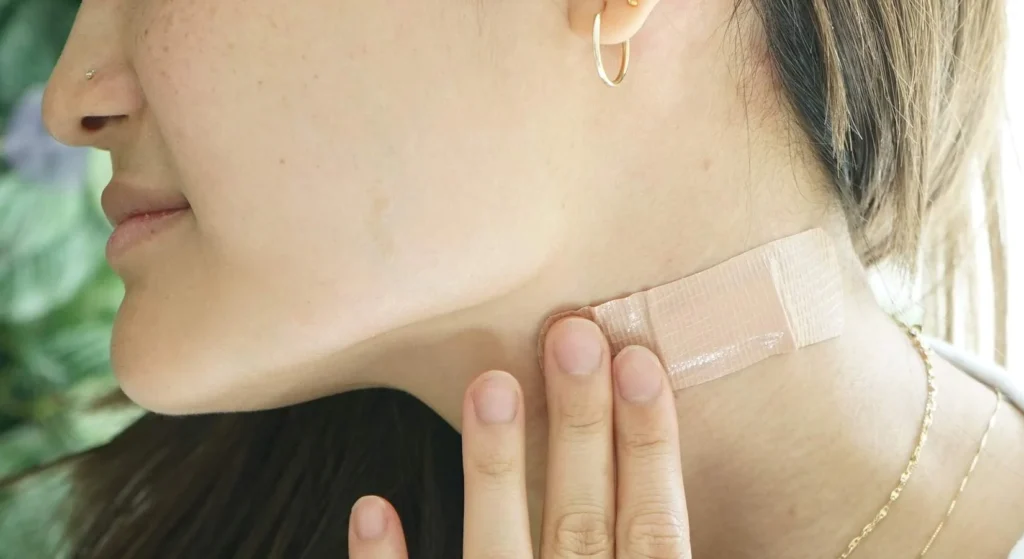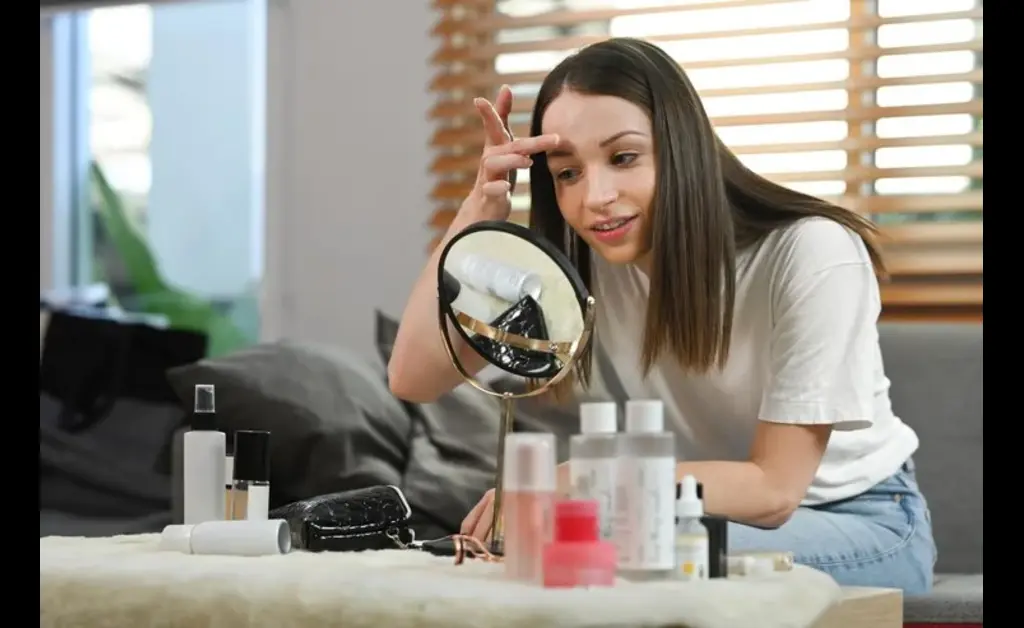Having healthy, glowing skin is a goal for many people, but finding the right skincare products to achieve this can be a daunting task. With so many options on the market, it’s easy to feel overwhelmed. However, by understanding your unique skin type and concerns, you can identify the products that will work best for you. In this comprehensive guide, I’ll share my personal experience and expert tips on how to find the right products for your skin.
Understanding Your Skin Type
The first step in finding the right products for your skin is to determine your skin type. Are you dealing with dry, oily, combination, or sensitive skin? Maybe your skin type has changed over time, or you have a mix of characteristics. Take some time to assess your skin’s behavior, such as how it reacts to certain environmental factors, the amount of oil it produces, and any areas of dryness or irritation.
One helpful way to determine your skin type is by doing a simple blotting test. After cleansing your face, wait 30 minutes and then gently blot your forehead, nose, cheeks, and chin with a clean tissue. If the tissue shows oil in all or most of these areas, you likely have oily skin. And If the tissue only shows oil in your T-zone (forehead and nose), you have combination skin. If the tissue is mostly dry, you have dry skin. And if the tissue shows patchy oil and dryness, you have sensitive skin.
Identifying Your Skin Concerns
In addition to understanding your skin type, it’s important to identify any specific skin concerns you may have. Do you struggle with acne, fine lines and wrinkles, dark spots, dullness, or something else? Pinpointing your primary skin concerns will help you target the right ingredients and formulations.

For example, if you’re dealing with acne, you’ll want to look for products containing ingredients like salicylic acid or benzoyl peroxide to help unclog pores and fight breakouts. If you’re concerned about aging, antioxidants, retinoids, and hydrating ingredients can help address fine lines and wrinkles. And for dull, uneven skin, look for products with exfoliating acids, vitamin C, and brightening botanical.
Table 1: Common Skin Concerns and Key Ingredients
| Skin Concern | Key Ingredients |
|---|---|
| Acne | Salicylic acid, benzoyl peroxide, tea tree oil |
| Aging/Wrinkles | Retinoids, vitamin C, hyaluronic acid |
| Dullness/Uneven Tone | Exfoliating acids, vitamin C, niacinamide |
| Dryness | Hyaluronic acid, ceramides, plant-based oils |
| Sensitivity | Soothing botanical, Centella, calming peptides |
Researching Skincare Ingredients
Once you’ve identified your skin type and concerns, the next step is to become familiar with common skincare ingredients and how they can benefit your skin. This will help you make informed decisions when selecting products.
Some of the most important categories of skincare ingredients include:
- Cleansers: Gently remove dirt, oil, and impurities without stripping the skin.
- Moisturizers: Hydrate and lock in moisture to keep skin plump and healthy.
- Exfoliants: Slough off dead skin cells to reveal a brighter, more even complexion.
- Serums: Concentrated treatments that target specific concerns like anti-aging or acne.
- Sunscreen: Protect skin from harmful UV rays to prevent premature aging and dark spots.
It’s also important to be aware of potential irritants or ingredients that may not work well for your skin type. Things like fragrances, alcohol, and harsh sulfates can be drying or cause reactions in sensitive individuals.
Selecting the Right Products For Skin Type
With a solid understanding of your skin and the ingredients to look for, you can now start shopping for products. When evaluating potential purchases, consider the following:

- Match the product formulation to your skin type (e.g., gel-based moisturizers for oily skin, creamy cleansers for dry skin).
- Look for the key active ingredients that address your primary skin concerns.
- Check the concentration of active ingredients – higher percentages don’t always mean better results.
- Patch test any new products before applying them all over your face to ensure they don’t cause irritation.
- Start slowly by introducing one new product at a time to monitor how your skin reacts.
Remember, finding the right products for your skin is often a process of trial and error. Be patient, persistent, and open to making adjustments as your skin’s needs change over time.
Establishing a Skincare Routine
Once you’ve identified the right products for your skin, it’s time to create a consistent skincare routine. A basic routine typically includes cleansing, treating with serums or spot treatments, and moisturizing – both day and night. Depending on your specific concerns, you may also want to incorporate exfoliating, masking, or specialty treatments into your regimen.
The key is to listen to your skin and be flexible. Pay attention to how your complexion responds to the products you’re using and make changes as needed. It’s also important to introduce new items gradually to ensure your skin can tolerate them without irritation or adverse reactions.
Example Skincare Routine for Combination Skin:
- Morning:
- Gentle Foaming Cleanser
- Vitamin C Serum
- Mattifying Moisturizer with SPF 30
- Evening:
- Micellar Water to Remove Makeup
- Salicylic Acid Exfoliating Toner
- Retinol Night Cream
- Hydrating Eye Cream
Monitoring and Adjusting Your Routine
Achieving healthy, glowing skin is an ongoing process, not a one-time fix. Be prepared to monitor your skin’s response to the products you’re using and make adjustments as needed. If you notice increased dryness, oiliness, breakouts, or any other changes, it may be time to reevaluate your routine.
Additionally, be mindful that your skin’s needs can shift with factors like changing seasons, hormonal fluctuations, stress levels, and age. Stay attuned to these changes and don’t be afraid to experiment with new formulations to find the perfect fit.
Patch Testing for New Products
Before incorporating any new skincare products into your routine, it’s crucial to patch test them first. Patch testing helps you identify potential irritations or adverse reactions before applying the product all over your face.

To patch test, simply apply a small amount of the product to a discreet area of your skin, like the inside of your arm or behind your ear. Monitor the area for 24-48 hours, looking for any signs of redness, itching, or other irritation. If your skin responds negatively, do not use the product.
Patch testing is especially important if you have sensitive skin or are introducing an active ingredient like retinol or exfoliating acids for the first time. Even if a product is marketed as “gentle” or “suitable for all skin types,” your unique complexion may react differently. Better safe than sorry!
Incorporating New Products Slowly
When you do introduce a new product, take it slow. Resist the urge to overhaul your entire routine at once. Instead, add the new item gradually, using it every 2-3 days at first. This gives your skin time to adjust and allows you to monitor how it responds.
Going too fast with multiple new products can overwhelm your complexion and lead to unwanted reactions like breakouts, dryness, or irritation. By taking a measured approach, you can better identify which items are working for you and which may need to be swapped out.
As a general rule of thumb, experts recommend introducing no more than one new product per month. This gives your skin ample time to adapt and ensures you can accurately pinpoint the cause of any changes, whether positive or negative.
Adjusting Your Skin Care Routine Seasonally
Your skin’s needs can shift dramatically with the changing seasons. What works well for you in the summer may not be the best fit come wintertime.

For example, during the warmer, more humid months, you may find that your skin requires a lighter, more gratifying moisturizer to prevent excess shine and clogged pores. But in the cooler, drier winter air, you may need to switch to a richer, more emollient formula to prevent flakiness and dehydration.
Pay attention to how your complexion reacts to fluctuations in temperature, humidity, and sun exposure throughout the year. Be prepared to make adjustments to your cleansers, moisturizers, exfoliators, and other products as needed to keep your skin balanced and healthy.
Seasonal changes can also impact the frequency with which you use certain products. You may need to scale back on exfoliating treatments in the winter when skin is more prone to dryness, or increase the use of hydrating serums during the summer to combat increased oil production.
Consulting a Dermatologist
If you’ve tried various products and are still struggling to find the right fit for your skin, it may be time to consult a dermatologist. These skincare experts can provide personalized guidance based on a professional evaluation of your complexion.
A dermatologist can help you:
- Accurately determine your skin type and underlying conditions
- Identify the root causes of persistent skin concerns
- Recommend prescription-strength treatments or medications, if needed
- Create a targeted, science-backed skincare regimen
- Monitor your progress and make adjustments over time
While visiting a dermatologist may require an investment of time and money, their expertise can be invaluable in helping you overcome stubborn skin issues and achieve your desired results. Consider it a worthy investment in the health and appearance of your complexion.
Conclusion
Finding the right skincare products for your unique skin can take time and experimentation, but it’s a worthwhile journey. By understanding your skin type and concerns, researching key ingredients, and taking a measured approach to incorporating new items, you can build a routine that leaves your complexion looking and feeling its best.
Remember to be patient, persistent, and adaptable. Your skin’s needs may change over time, so stay attuned to how it responds and don’t be afraid to make adjustments as necessary. With the right products and a consistent, customized regimen, you’ll be on your way to healthy, radiant skin.
FAQS
How do I know if a skincare product is right for my skin?
Determining if a skincare product is a good match for your skin involves several factors. First, make sure the formulation aligns with your skin type – gel cleansers and mattifying moisturizers for oily skin, creamy cleansers and emollient creams for dry skin, and a mix of products for combination complexions.
Next, check the key active ingredients to ensure they target your primary skin concerns, whether that’s acne, signs of aging, dullness, or something else. Pay attention to the concentration of these actives as well – higher percentages don’t always mean better results.
It’s also crucial to patch test any new products before applying them all over your face. This helps you identify potential irritations or adverse reactions before fully incorporating the item into your routine. If you experience redness, itching, or other undesirable effects, that product is likely not a good fit for your skin.
Finally, introduce new products slowly, one at a time, and monitor how your complexion responds over the course of 2-4 weeks. This allows you to pinpoint which items are working well and which may need to be swapped out.
What are the most important factors to consider when choosing skincare products?
When selecting skincare products, there are several key factors to consider:
- Skin type: Identify whether your skin is dry, oily, combination, or sensitive, and choose formulations accordingly.
- Skin concerns: Understand your primary skin issues, such as acne, aging, dullness, etc., and look for products containing ingredients that target those concerns.
- Ingredient quality: Opt for products with high-quality, well-researched active ingredients rather than fillers or potential irritants.
- Concentration of actives: Higher percentages of ingredients like retinol or exfoliating acids don’t always mean better results – look for the right balance.
- Potential sensitivities: Avoid products with fragrances, alcohol, or other known irritants if you have a sensitive complexion.
- Application method: Consider whether a product is meant to be used as a serum, cream, oil, or mask, and how it fits into your existing routine.
- Packaging and stability: Look for air-tight, opaque containers that protect ingredients from light and air exposure.
Taking the time to thoroughly evaluate these factors can help ensure you find skincare products that work in harmony with your unique skin.
How often should I change my skincare products?
There’s no one-size-fits-all answer to how often you should change your skincare products, as it really depends on a few key factors:
- Skin type and concerns: Skin with more sensitivity or specific issues like acne may require more frequent product changes compared to normal, healthy complexions.
- Product formulations: Active ingredients like retinoids and exfoliants should be introduced gradually and may need to be rotated or rested periodically.
- Seasonal changes: You may need to swap out certain moisturizers, cleansers, or treatments as your skin’s needs shift with the weather.
- Product performance: If you notice a product is no longer providing the desired results or your skin starts reacting negatively, it’s time for a change.
As a general guideline, dermatologists recommend introducing no more than one new product per month. This allows your skin time to adjust and helps you pinpoint the cause of any changes, whether positive or negative.
Additionally, be mindful of expiration dates and discard any products that have passed their shelf life, as the formulations may become less effective or even irritating over time.
The key is to listen to your skin and be willing to make adjustments as needed. Pay attention to how your complexion responds and don’t be afraid to experiment until you find the perfect products for your unique needs.
Can using the wrong skincare products cause skin problems?
Absolutely – using the wrong skincare products can absolutely lead to a host of skin problems. Some potential issues include:
Acne breakouts: Products with pore-clogging ingredients or too-harsh formulas can trigger increased oil production and acne.
Irritation and redness: Ingredients like fragrances, alcohol, and certain preservatives can cause inflammation, dryness, and sensitivity.
Dullness and dehydration: Using the wrong moisturizer, whether it’s too heavy or not hydrating enough, can leave skin feeling dry, flaky, and lackluster.
Accelerated aging: Applying the wrong anti-aging products, especially those with retinoids or exfoliants used improperly, can actually worsen fine lines and wrinkles.
Hyperpigmentation: Ingredients that are too harsh or sun-sensitizing can lead to unwanted dark spots and uneven tone.
The key is finding products that align with your unique skin type and concerns. Rushing into a new regimen without properly evaluating the formulations is a recipe for potential problems. Always patch test, introduce new items gradually, and be willing to make adjustments as needed.
What are the signs that a skincare product is not working for my skin?
There are several telltale signs that a skincare product may not be the right fit for your skin:
- Increased breakouts or congestion: If you notice a sudden uptick in pimples, blackheads, or clogged pores after using a product, that’s a red flag.
- Irritation and inflammation: Watch out for redness, itching, stinging, or dryness, as these can indicate your skin is reacting poorly to an ingredient.
- Dullness and dehydration: If your complexion starts to look dull, flaky, or overly oily, the product may not be providing enough (or the right type of) hydration.
- No visible improvement: If you’re not seeing the benefits you expected – whether that’s reduced acne, fewer fine lines, or a healthier glow – the product is likely not effective for your needs.
- Sensitivity to other products: If you find your skin becomes more reactive to other items in your routine after using a particular product, that’s a sign it may not be compatible.
The key is to pay close attention to how your skin behaves after introducing a new item. If you notice any negative changes, stop using the product immediately and assess what needs to be adjusted in your regimen.
Remember, your skin’s needs can shift over time, so what worked well in the past may not be the right fit moving forward. Stay vigilant, be patient, and don’t be afraid to experiment until you find the perfect products for your unique complexion.

